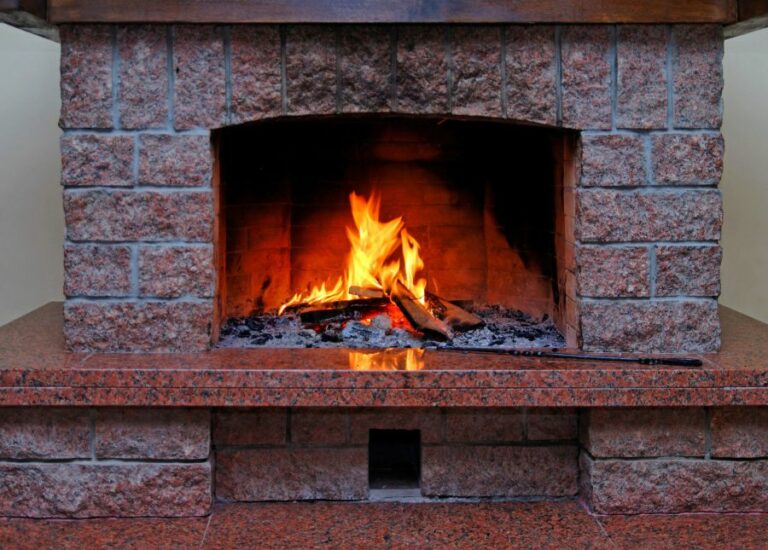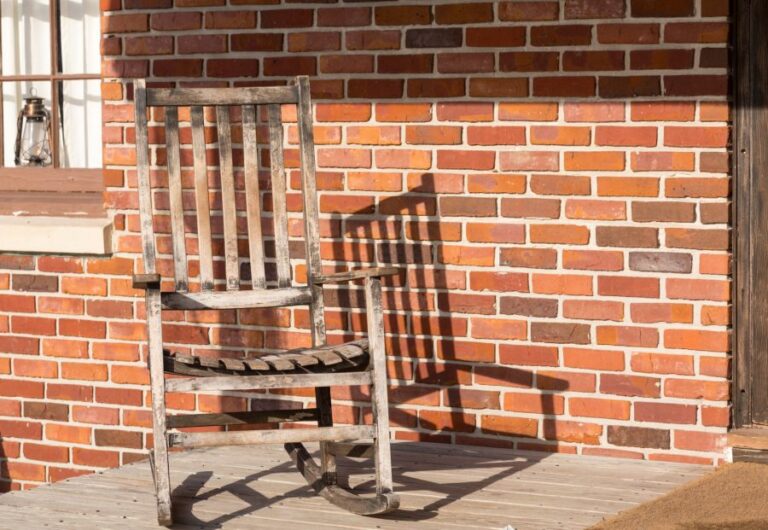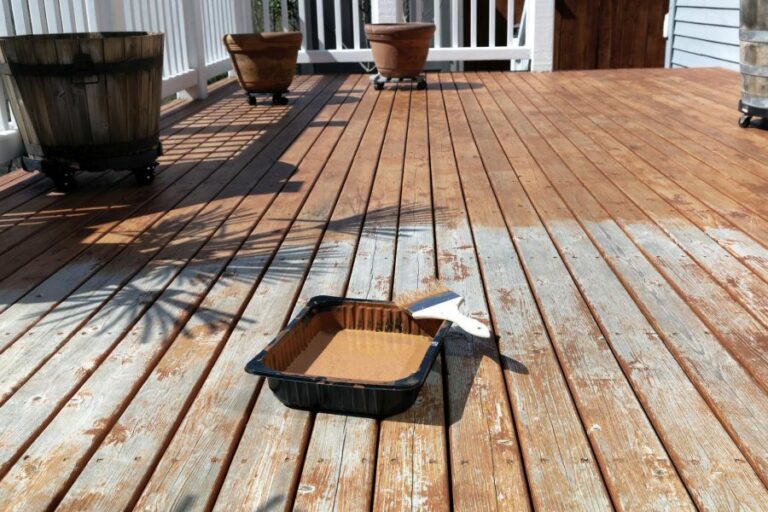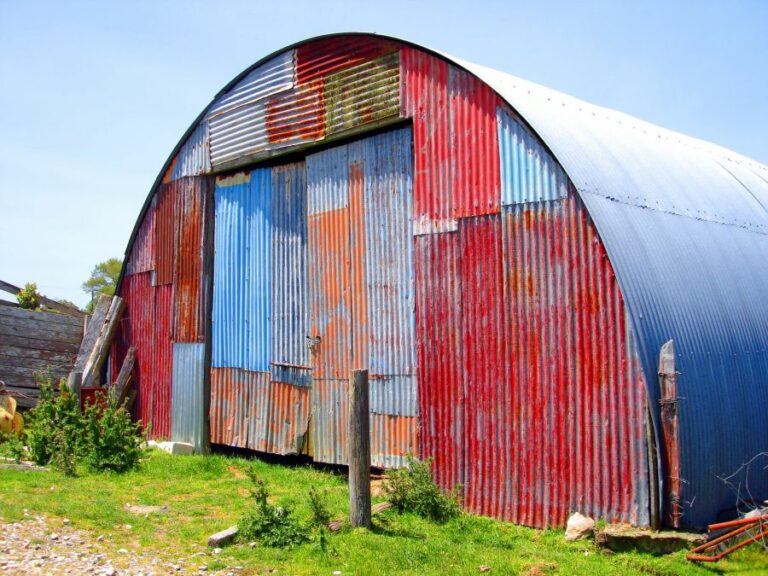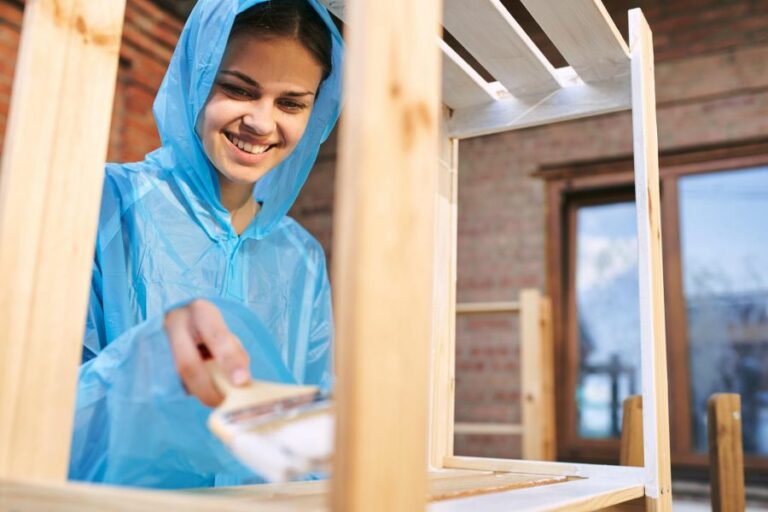Best Paint For Outdoor Mural On Wood. What Pros Say
When creating an eye-catching outdoor mural on wood, selecting the best paint is crucial for a long-lasting, vibrant piece of art. With so many options available in the market, you might wonder which paint can withstand the elements and keep your wood mural looking fresh for years.
Best paint for outdoor mural on wood:
The best paint for an outdoor mural on wood includes acrylic latex paint, masonry paint, and marine paint. Acrylic latex paint is versatile and eco-friendly, offering water and UV resistance. Masonry paint provides durability and elasticity, while marine paint is ideal for coastal or high-humidity environments with superior waterproofing and UV resistance. After painting, adding a protective clear coat can enhance durability and protection against the elements.

Discover the ultimate paint options for creating an exceptional outdoor mural on wood. Learn about various paint types, durability, vibrancy, and tips for long-lasting results. Keep reading for the must-know, insider secrets to achieving a masterpiece that stands the test of time.
Contents
- 1 Top-Quality Paint for Creating an Outdoor Mural on Wooden Surfaces
- 2 What is the Most Suitable Type of Paint for Outdoor Artwork on Wooden Surfaces?
- 3 What Type of Paint Is Best Suited for Creating an Outdoor Mural?
- 4 What is the process for painting a wooden outdoor mural?
- 5 What is the process for sealing an outdoor wooden mural?
Top-Quality Paint for Creating an Outdoor Mural on Wooden Surfaces
Outdoor murals can serve as a fantastic way to add character and color to any exterior space, whether it’s a park, a business facade, or a garden wall. When it comes to creating a mural on wood, there are numerous considerations to ensure the piece maintains its vibrancy and longevity.
One of the most important factors in achieving this goal is selecting the right paint for the job.
• Acrylic Latex Paint: A Go-To Choice for Many Artists
Acrylic latex paint is a popular choice for outdoor murals on wood, as it offers a wide range of advantages that make it ideal for use in these projects. Some key benefits of acrylic latex paint include:
- Water Resistance: Acrylic latex paint creates a flexible, durable film once it dries, making it highly resistant to weather conditions such as rain or snow. This characteristic helps protect the wooden surface underneath from moisture-related damage.
- UV Resistance: Many acrylic latex paints are specifically designed to withstand harsh sunlight, making them less susceptible to fading over time. To further enhance UV protection, consider using a paint with added UV blockers or modifiers.
- Ease of Application: Acrylic latex paint can be easily applied with brushes, rollers, or spray equipment. It’s also quick-drying, reducing downtime between coats.
- Non-toxic and Eco-friendly: Unlike oil-based paints, acrylic latex formulations are water-based and typically have a low level of volatile organic compounds (VOCs), making them better for both the environment and human health.
One highly recommended acrylic latex paint for outdoor murals on wood is Golden’s Heavy Body Acrylics, known for their excellent durability, brilliant color options, and resistance to fading.
• Masonry Paint: A Durable Alternative with Unique Features
Masonry paint, also known as elastomeric paint, is another suitable option for outdoor murals on wood. Their key characteristics include:
- High Elasticity: Elastomeric paints are highly flexible and can expand and contract with the natural movements of the wood, making them an ideal choice where temperature fluctuations are common.
- Waterproofing Capabilities: Masonry paint can create a highly effective barrier against moisture ingress, essential in protecting wooden surfaces in outdoor conditions.
- Longevity: Elastomeric paints are known for their long-lasting performance, maintaining their integrity for extensive periods even in harsh environments.
One notable brand of masonry paint is Sherwin-Williams Conflex, celebrated for its long-lasting performance and resistance to cracking or peeling.
• Marine Paint: High-Performance Protection for Coastal Settings
For outdoor murals located in coastal areas or other high-humidity environments, marine paint can offer hard-to-beat resilience against the elements. Key features of marine paint include:
- Superior Waterproofing: Marine paint is specifically designed to withstand harsh, moist conditions and provide an effective barrier against water intrusion, making it ideal for protecting wooden surfaces in wet climates.
- UV Resistance: Marine paints typically contain UV inhibitors, ensuring minimal color fading and ensuring the longevity of your mural’s vibrance.
- Antimicrobial Properties: Some marine paints contain antimicrobial additives that prevent mold, mildew, and algae growth, which can prove essential in damp environments.
A well-regarded marine paint option for outdoor murals on wood is Interlux’s Brightside, known for its excellent durability and impressive UV protection.
• Final Thoughts
Choosing the right paint for an outdoor mural on wood depends on several factors, such as location, climate, and desired finish. Acrylic latex paint can offer a versatile and eco-friendly choice, while masonry paint provides exceptional durability and elasticity.
For coastal or high-humidity environments, marine paint is a fantastic high-performance option.
To further safeguard your mural against the elements, consider applying a protective clear coat after completing the painting process. Clear coats in the form of varnishes or sealants can provide additional waterproofing, UV protection, and increased durability.
Remember, it’s essential to thoroughly clean and prepare the wood surface before painting to ensure proper paint adhesion and long-lasting results. With careful planning and execution, your outdoor mural on wood will remain bright and beautiful for years to come.
Paint Brand | Type | Key Features |
|---|---|---|
Montana Cans | Aerosol Spray Paint | Weather-resistant, UV-resistant, great coverage, wide color range |
Liquitex Professional | Acrylic Paint | Permanent, weather-resistant, UV-resistant, wide color range, easy mixing |
Rust-Oleum Painter’s Touch | Acrylic Latex Paint | Weather-resistant, UV-resistant, durable, easy application, wide color range, environmentally friendly |
Golden Artist Colors | Acrylic Paint | Highly pigmented, weather-resistant, UV-resistant, long-lasting, great mixing |
Sherwin-Williams SuperPaint | Acrylic Latex Paint | Weather-resistant, UV-resistant, durable, easy application, wide color range, environmentally friendly |
What is the Most Suitable Type of Paint for Outdoor Artwork on Wooden Surfaces?
Creating outdoor art on wood can be a delightful way to add a personalized touch to your garden, backyard, or exterior walls. However, selecting the ideal paint that would protect your masterpiece from the elements is absolutely crucial.
• Essential Factors to Consider
– Durability
One of the most critical aspects of outdoor paint is its durability. The paint you choose should be capable of withstanding various weather conditions, such as sunlight, rain, humidity, and temperature fluctuations. This ensures that your artwork maintains its appearance and integrity over time.
– UV Resistance
Ultraviolet (UV) rays from the sun can cause paint to fade, discolor, or degrade over time. Therefore, using a paint that has high UV resistance or adding a UV-resistant topcoat to your artwork plays a significant role in its longevity.
– Flexibility
Outdoor wood, especially in fluctuating temperatures and humidity levels, may experience contraction or expansion. A paint with excellent flexibility can adapt to these changes, reducing the likelihood of cracking or peeling.
– Waterproofing
Water exposure poses a significant threat to wooden surfaces, so the paint you choose must provide adequate protection against moisture. Look for a paint that has excellent waterproofing or water-repelling properties.
• Types of Paint Suitable for Outdoor Art on Wood
– Acrylic Latex Paint
Acrylic latex paint is a water-based product and is well-suited for outdoor wood artwork because it combines excellent durability, flexibility, and UV resistance. They dry quickly and can be cleaned up easily with water.
Recommendation
I recommend using premium-quality 100% acrylic latex paint for outdoor wood art projects. These paints exhibit superior adhesion, durability, and resistance properties. Brands such as Benjamin Moore and Sherwin-Williams offer high-quality acrylic latex paints suitable for outdoor use.
– Oil-Based Paint
Oil-based paints adhere well to wood, providing a tough, durable, and long-lasting finish. However, They offer less flexibility and UV resistance compared to acrylic latex paints. Additionally, they take longer to dry and require mineral spirits or paint thinner for clean-up.
Recommendation
While I prefer acrylic latex paint for outdoor wood art, oil-based paint can also be an excellent option if you are searching for a durable and long-lasting finish. Some reputable oil-based paint options include Rust-Oleum Protective Enamel or Behr Alkyd paint.
– Exterior Wood Stain
Exterior wood stains can be an ideal solution if you want to showcase the natural beauty of the wood rather than cover it with a solid color.
Wood stains offer varying levels of opaqueness, with options ranging from transparent to solid stains. They provide water resistance, UV protection and can be easily maintained over time.
Recommendation
For those who want to use wood stains rather than paint, I recommend Cabot or Olympic exterior wood stain products. They are available in various opacity levels and offer an extensive range of color choices.
• Prepping the Wood Surface
Before applying the ideal paint, it is crucial to properly prepare the wood surface for optimum adhesion and longevity. Follow these steps to ensure a smooth and long-lasting finish:
- Make sure the wood is dry, clean, and free of dirt or debris.
- Sand the surface using fine-grit sandpaper to create a smooth, even texture.
- Apply a high-quality exterior wood primer, such as Zinsser’s Bulls Eye 1-2-3 Primer or Kilz Exterior Primer. This will provide a uniform base for the paint and enhance its adhesion and durability.
- Allow the primer to dry fully, as per the manufacturer’s instructions, before applying the paint.
• Adding a Protective Topcoat
To further enhance the durability and longevity of your outdoor wood art, consider applying a protective topcoat, such as a clear polyurethane or a UV-resistant varnish.
These products provide additional protection against moisture, sunlight, and other environmental factors. Follow the manufacturer’s directions for proper application and drying time.
• Conclusion
When selecting the best paint for your outdoor wood art project, it is essential to consider factors such as durability, UV resistance, flexibility, and waterproofing.
While various paint options are suitable for outdoor use, my top recommendation is high-quality acrylic latex paint for its versatile and superior performance. Don’t forget to properly prep the wood surface before painting and add a protective topcoat to ensure that your artwork endures the test of time.
A helpful resource for further information on selecting the right paint for outdoor wood projects can be found on the United States Department of Agriculture (USDA) Forest Service website here.
Paint Brand | Type | Pros | Cons |
|---|---|---|---|
Montana Cans | Spray Paint | Fast-drying, UV-resistant, wide color range, durable | Can be expensive, requires practice for even application |
Liquitex | Acrylic Paint | Flexible, water-resistant, UV-resistant, mixable, easy to apply with brush | May require multiple coats for full coverage, can fade over time |
Golden | Acrylic Paint | Highly pigmented, UV-resistant, water-resistant, long-lasting | Expensive, may require multiple coats for full coverage |
Rust-Oleum | Enamel Paint | Durable, weather-resistant, long-lasting, easy to apply with brush or roller | May have a limited color range, dries slowly, difficult to remove |
What Type of Paint Is Best Suited for Creating an Outdoor Mural?
Creating a vibrant and eye-catching outdoor mural is an excellent way to showcase your artistic talents and liven up a public space. However, the type of paint you choose for your masterpiece can make or break its success.
Outdoor murals are exposed to weather, sunlight, and other environmental factors that can deteriorate the artwork’s quality over time. Hence, it’s crucial to use paints that are specifically designed for outdoor use and can withstand the elements.
• A Durable and Long-Lasting Outdoor Mural: Acrylic Paints
When considering which kind of paint to use for an outdoor mural, acrylic paints are often the go-to choice for many artists. Acrylics are water-based paints that are known for their durability, ease of use, and resistance to various weather conditions, making them a perfect option for outdoor murals.
– Benefits of Acrylic Paints for Outdoor Murals
There are several reasons why acrylic paints are highly recommended for outdoor projects:
- Weather Resistance: Acrylics are resistant to temperature fluctuations, humidity, and precipitation, ensuring that your mural remains vibrant and durable despite adverse weather conditions.
- UV Resistance: Acrylic paints offer excellent protection against the harmful effects of ultraviolet radiation from the sun. This resistance helps prevent colors from fading and ensures that your mural retains its original appearance over time.
- Quick Drying Time: Acrylic paints dry quickly, allowing you to work on your mural without the need for long waiting periods between layers.
- Easy Application: Acrylics can be easily applied to various surfaces, including concrete, brick, and wood, with minimal surface preparation required.
- Low Toxicity: Since acrylic paints are water-based, they are generally considered to be safer for both the environment and the artist than oil-based or solvent-based paints.
– Brands and Types of Acrylic Paints
There are numerous acrylic paint brands and types available on the market, each with its unique properties and characteristics. Some highly regarded brands for outdoor mural use include:
- Golden Artist Colors (Chroma Mural Paint)
- Liquitex Professional Series
- Nova Color Artists’ Acrylics
- MuralMAX Outdoor Acrylics
While shopping for acrylic paints, it’s essential to choose those designed for outdoor use, as they contain UV and weather-resistant additives that ensure your mural’s longevity. Look for products labeled as “mural paint” or “exterior acrylic paint” to ensure their suitability for outdoor projects.
– Tips for Applying Acrylic Paints to an Outdoor Mural
To achieve the best results when using acrylic paints for your outdoor mural, consider the following tips:
- Surface Preparation: Ensure that the surface is clean, dry, and free of any oils or residues before applying paint. If necessary, use a primer suitable for the surface material to ensure proper paint adhesion.
- Paint Application: Apply the paint in thin, even layers, allowing each layer to dry completely before applying the next. This technique ensures proper color saturation, reduces the risk of peeling or cracking, and allows for a more comfortable blending of colors.
- Sealant Application: Once your mural is complete and thoroughly dried, it’s essential to apply a clear, UV-resistant sealant to protect and prolong the life of your artwork. Sealants, such as those made by Golden Artist Colors, offer additional protection against the elements and prevent fading by minimizing the effects of UV radiation.
• Alternative Paint Options for Outdoor Murals
While acrylic paints are widely recommended for outdoor mural projects, some artists may prefer alternative paint options. These options may provide different finishes or effects based on the artist’s vision or unique project requirements:
– Oil-Based Paints
Oil-based paints are known for their rich color saturation and smooth blending capabilities. However, they have a slow drying time and may be less resistant to the elements than acrylic paints.
If you opt for oil-based paints, be sure to choose those specifically designed for outdoor use and apply a UV-resistant sealant to protect your mural from the elements.
– Spray Paints
Spray paints, specifically those designed for street art and graffiti, can also be a viable option for outdoor murals. These paints are typically quick-drying and offer a range of vibrant colors.
However, it’s essential to choose high-quality spray paints intended for outdoor use, as they will be more resistant to weather and UV exposure.
– Water-Based Exterior Paint
Another alternative is using water-based exterior house paint, which can offer the weather and UV resistance necessary for an outdoor mural. However, these paints may not provide the same range of color options or artistic effects as acrylic or oil-based paints.
• Conclusion
In conclusion, acrylic paints are the most suitable option for outdoor murals due to their durability, weather resistance, and ease of use.
While alternatives such as oil-based paints, spray paints, and water-based exterior paint can be used for outdoor mural work, it’s essential to select those designed specifically for exterior applications and follow proper surface preparation and sealing techniques to ensure your mural’s longevity.
What is the process for painting a wooden outdoor mural?
Creating a wooden outdoor mural can be an enjoyable and rewarding project, whether it’s for your own backyard or a community space. A well-crafted mural can add color, life, and personality to any outdoor area while also serving as a conversation starter or a way to foster neighborhood pride.
• Preparing the Surface
Before you can begin painting, it’s essential to prepare the painting surface properly. Doing so will ensure that the paint adheres well and that the mural will withstand outdoor elements.
– Clean the Wood
Remove any dirt, dust, or debris from the wood surface. Depending on the condition of the wood, a simple wipe-down with a cloth may suffice, or you may need to use a scrub brush and mild dish soap. Rinse thoroughly with water and allow the wood to dry completely.
– Repair and Sand the Surface
Inspect the wood for any cracks, holes, or other defects that need repair. Use wood filler as needed and allow it to dry according to the manufacturer’s instructions. Afterward, sand the entire surface with medium-grit sandpaper (around 120-grit) to create a smooth, even surface.
Wipe off any dust with a damp cloth and let the wood dry completely.
– Apply a Primer
Next, it’s time to apply an outdoor-approved wood primer. Primer helps the paint adhere to the wood and provides a protective barrier against moisture, which can prevent peeling and other damage. Follow the manufacturer’s instructions and apply the primer evenly with a brush or roller.
Typically, one or two coats are sufficient, but make sure to let the wood dry in between coats.
• Planning the Mural Design
Once the wood is properly prepared, it’s time to plan the design of your mural. Sketch out your ideas on paper, keeping in mind the dimensions of the wood and any details you want to emphasize.
You can create a simple or complex design, but it’s crucial to have a clear, refined plan before you begin painting the mural.
– Transfer the Design to the Wood
For transferring your design to wood, you can use either a grid technique or a projector. The grid technique involves drawing a grid on the wood and on your design, then copy the design onto the wood square by square.
The projector method involves projecting your design onto the wood and tracing the outlines.
– Color Selection
When it comes to choosing colors for your mural, it’s essential to use paints specifically designed for outdoor use, such as exterior acrylic or latex paints. These paints are more resistant to moisture, UV rays, and temperature changes than indoor paints, ensuring the longevity of your masterpiece.
You may also want to consider using UV-resistant paint or adding a UV-resistant clear coat to enhance the mural’s durability further.
• Painting the Mural
Now that the design is on the wood and you have your paints ready, it’s time to bring your mural to life. Start by painting the background first, followed by the larger shapes and objects in your design.
This will make it easier to layer the smaller details and finer lines without worrying about smudging or overlapping.
– Experience-based Recommendation: Paint in Layers
From experience, painting in layers can produce a more polished result, especially if you’re working with multiple colors or intricate designs. Allow each layer to dry fully before applying the next; otherwise, the colors may bleed or become muddy.
– Keeping Consistent
Pay attention to the consistency of the paint throughout the process. Adding water or a medium to thin the paint, if necessary, can help achieve consistent application and coverage. Additionally, be mindful of your brushstrokes to create a uniform appearance.
– Adding Highlights and Shadows
For a more three-dimensional and lifelike look, consider adding highlights and shadows to your mural. This can be achieved by applying darker shades of your chosen colors in areas where shadows would naturally fall and lighter shades in areas where light would hit.
• Sealing and Protecting the Mural
Once your mural is complete and dry, it’s critical to protect it from the elements. Apply one or two coats of a clear, non-yellowing, UV-resistant sealant, such as a varnish or polyurethane product designed for outdoor use.
This will protect the mural from moisture, fading, and other damage caused by exposure to the sun, rain, and more. Let the sealant dry according to the manufacturer’s instructions, and your wooden outdoor mural is ready for display!
In conclusion, with proper planning, surface preparation, design, and protective measures, painting a wooden outdoor mural can be a fulfilling and enduring project.
By following this expert guide, you’ll be on your way to creating a stunning piece of outdoor artwork that both you and your community can enjoy.
What is the process for sealing an outdoor wooden mural?
An outdoor wooden mural, when properly sealed, can last for many years and serve as a visually appealing tribute to art and the community.
When it comes to outdoor wooden mural preservation, there are a few critical areas to focus on, such as:
- Choosing the right materials
- Proper surface preparation
- Application techniques
- Maintenance and care
• Materials Required for Sealing a Wooden Mural
Before diving into the process itself, it is essential to gather the necessary materials to achieve optimal results. For sealing an outdoor wooden mural, the following products are highly recommended:
- High-grade exterior primer
- Acrylic latex exterior paint
- UV-resistant clear sealer
- Clean, lint-free cloths
- Sandpaper (80-grit and 120-grit)
- Paintbrushes and rollers
- Protective goggles and gloves
Special Note: When choosing the exterior primer and paint, it is vital to select products that are specifically designed for outdoor use, as these are formulated to withstand harsh weather conditions and provide better adhesion.
• Step 1: Surface Preparation
Proper surface preparation is crucial to ensure a long-lasting and durable seal for your outdoor wooden mural. Accurate preparation involves the following steps:
– Cleaning
Begin with a thorough cleaning of the mural to remove any dirt or debris. You may use mild detergent and water for scrubbing, followed by rinsing with clean water. Allow the mural to dry completely before proceeding.
– Sanding
Sanding the surface will not only remove any old coating or paint but also help create a smoother surface for better adhesion. Start with 80-grit sandpaper to remove the old paint, and then switch to 120-grit sandpaper for a smooth finish.
Wipe down the surface with a clean cloth to remove any dust or debris.
– Filling in Cracks or Voids
Inspect the mural for any cracks or voids that may compromise its durability. Use a high-quality exterior wood filler to fill in these areas, following the manufacturer’s instructions. Allow the filler to dry and then sand the surface for a smooth finish.
• Step 2: Applying an Exterior Primer
Priming is an essential step to ensure better paint adhesion and overall durability. Following the correct application process will also enhance the visual appearance of the mural.
- Using a paintbrush, apply the exterior primer on the wooden mural evenly, following the direction of the wood grain.
- Allow the primer to dry as per the manufacturer’s recommendations, typically between 1-2 hours.
- Apply a second coat of primer if necessary to achieve complete coverage.
- Allow the second coat to dry before proceeding to paint.
• Step 3: Painting the Wooden Mural
Utilizing an acrylic latex exterior paint, apply the first coat following the direction of the wood grain. Allow the paint to dry for at least 2 hours. Apply a second coat to achieve complete coverage and let it dry as well.
• Step 4: Applying a UV-Resistant Clear Sealer
A UV-resistant clear sealer helps protect the wooden mural from harmful sun rays, prolonging its lifespan and visual appeal. When applying a clear sealer, use a clean paintbrush or roller and cover the entire surface in a thin, even layer.
Allow the sealer to dry for at least 4 hours before applying a second coat for optimum protection.
• Step 5: Maintenance and Care
Periodic inspection and maintenance are necessary for preserving your outdoor wooden mural. Check for any signs of weathering, peeling, or flaking paint, and promptly address any concerns. To maintain the mural’s longevity, it is recommended to reapply a coat of UV-resistant sealer every 2-3 years.
Step | Description |
|---|---|
1 | Clean the wooden surface properly to remove any dirt or debris. |
2 | Sand the surface lightly to ensure it is smooth and even. |
3 | Apply a coat of primer to the wooden surface, allowing it to dry completely. |
4 | Create or attach the desired mural design using weather-resistant paint or materials. |
5 | Allow the paint or materials to dry completely. |
6 | Apply a coat of clear, weather-resistant sealer to the entire surface of the mural, making sure to cover all painted areas thoroughly. |
7 | Allow the sealer to dry completely, according to the manufacturer’s instructions. |
8 | Inspect the mural to ensure all areas are properly sealed, and if needed, apply additional coats of sealer for maximum protection. |

